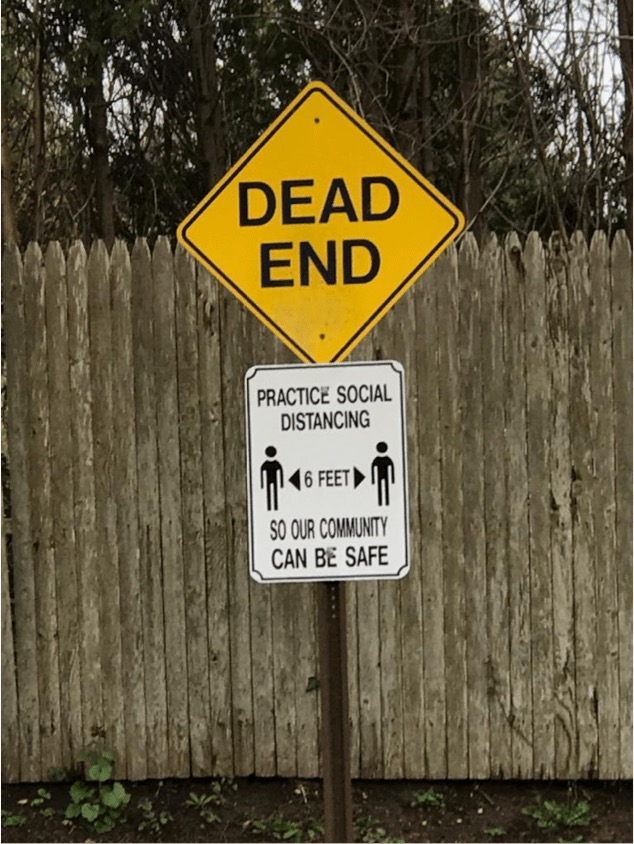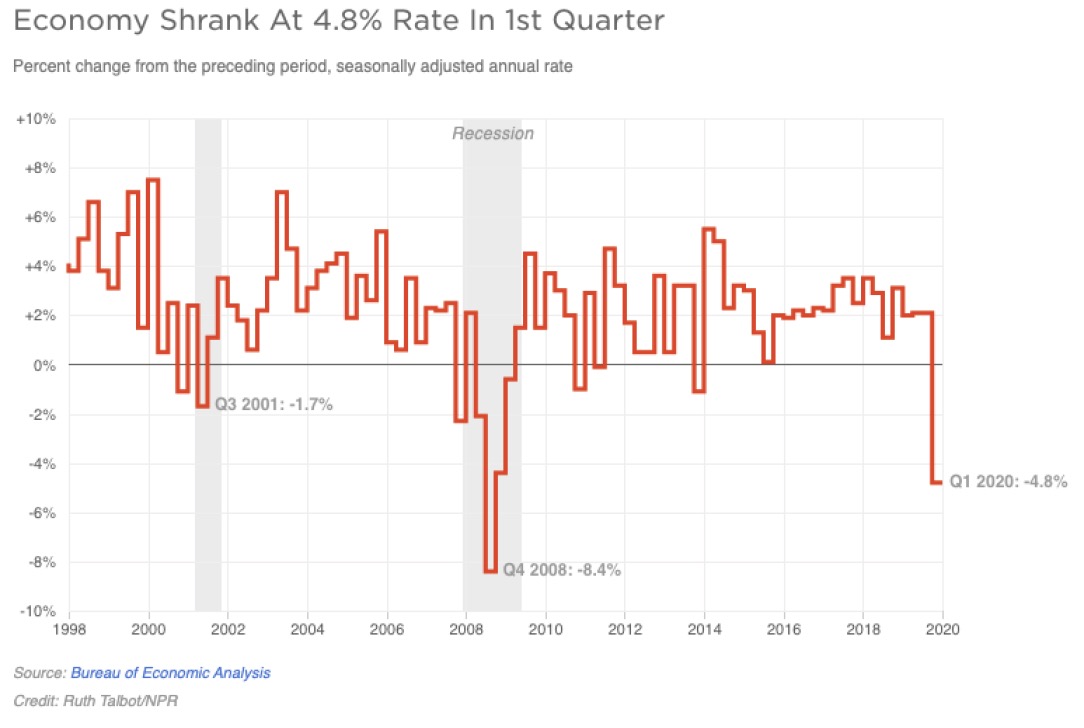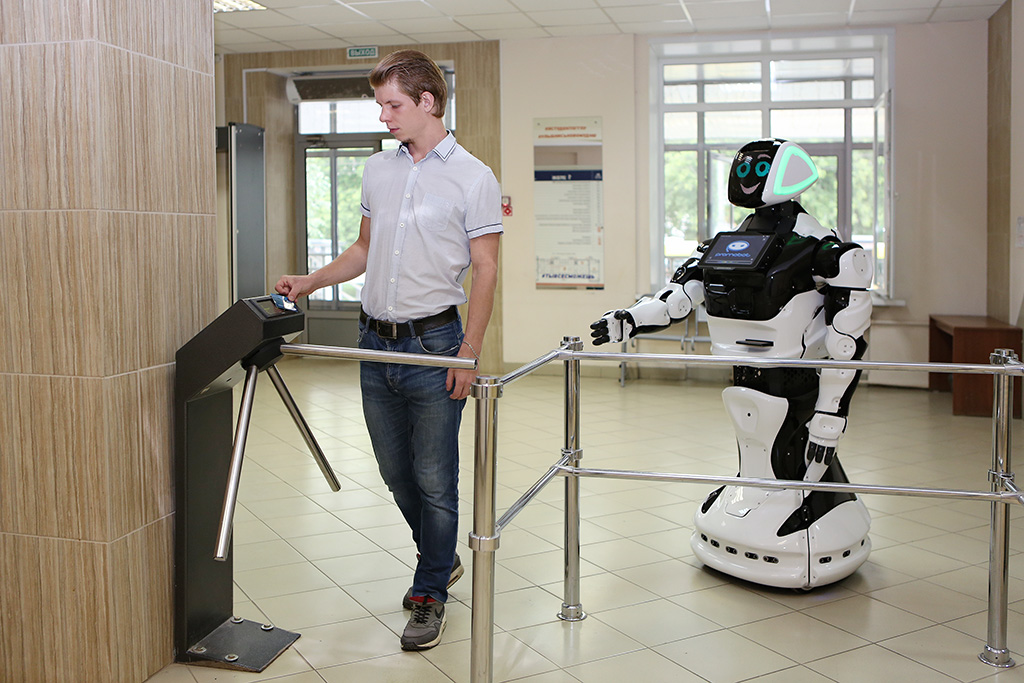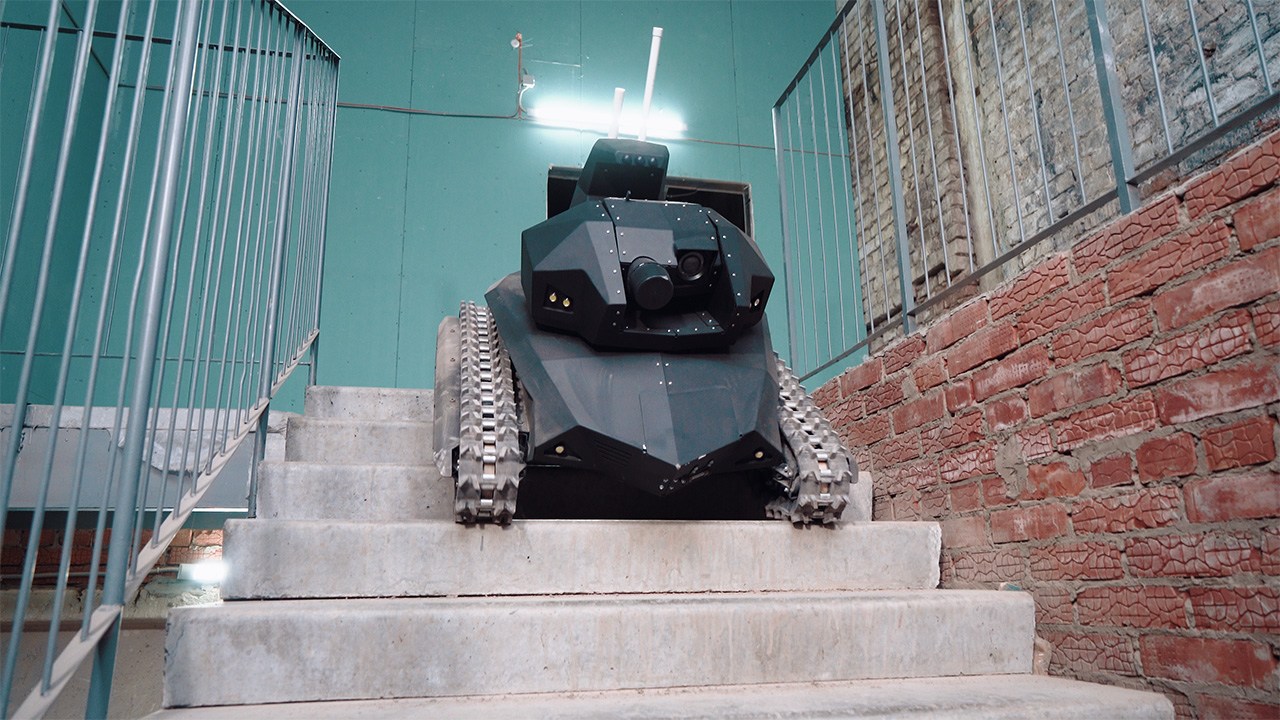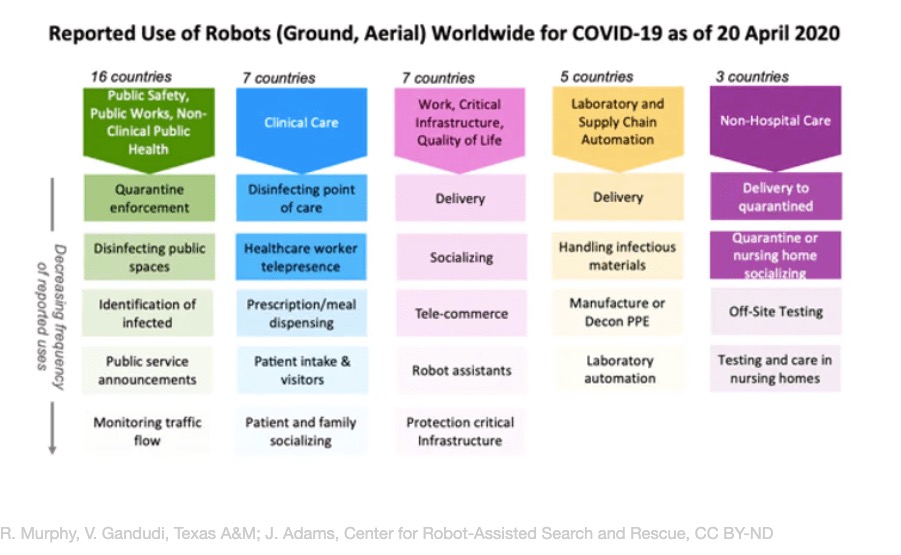Driving over the Whitestone Bridge, looking out at the magnificent view, I pressed the accelerator a bit harder, speeding away from the skyline. Now in a remote location, missing the urban action, I await orders from the Governor on reopening. If there are any certainties in this age of coronavirus, we will never return to life as we knew before March.
This past week I joined the Urban Land Institute‘s webinar panel, presenting how robots will facilitate an economic renewal. Currently, COVID-19 has led to a 30% decline in the US economy with more than 30 million Americans filed for unemployed. Gregory Daco, Chief US economist for Oxford Economics, argues that this is “only the tip of the iceberg.” Daco compared the current state to World War II whereby all work stopped for the war effort. Fed Chairman Jerome Powell retorted, “It will start to pick up as people start to return to their normal patterns of spending, but the chances are it will not go right back to where we were.” Echoing this sentiment, I informed over 100 New York property owners that the future of work, at least in the near term, will depend heavily on remote operations, smaller teams, and healthier facilities.
Prior to the global health crisis, robots primarily augmented human tasks. Ironically, in order to save lives, today’s reality will bolster a dystopian view of a bot takeover. There are many low-paying jobs such as customer greeters, front desk operators, and sales associates that are not in the spirit of social distancing protocols. After my talk with Nikki Greenberg of the Future of Real Estate, and Dror Poleg of Rethinking Real Estate, I reached out to a local service robot company to understand how his business has changed.
Oleg Kivokurtsev is the founder of Promobot which is headquartered in New York City. The Russian-born engineer started building his first humanoid literally in his garage. Today there are 500 Promobots in 36 countries generating many millions of dollars annually. In explaining how his business halted overnight, the innovator griped, “Our business has drastically changed. Before, our main product was a service robot Promobot, which worked in public areas: from malls and offices to museums and movie theaters, above all else.” Downcast he added, “Nowadays, the world is not the same with the COVID-19 pandemic ravaging worldwide. Unfortunately, for our clients, it means no business at this time.”
Kivokurtsev is not waiting for the world to open up, he has begun switching gears to meet the requirements of the new normal today. “When it comes to social distancing, our solutions provide all of the information on how to follow social distancing guidelines. Our other option is telepresence ― it allows users to communicate and interact through the robot remotely,” says the roboticist. He illustrated this by pointing to the lobby of a Manhattan office building. “After the pandemic, we think that all of the building managers and receptionists have to be replaced because we now realize that they are at the highest risk of transmitting the disease ― they interact with every single person coming through the doors of a building. This makes them susceptible and puts them at significant risk. The same could be applied to salespeople in locations. When they interact with customers they can catch the virus and transmit it to others unknowingly.” Kivokurtsev exclaims, “Promobot can be integrated with the security system, SIP telephony or a building’s database. The robot can remember every person that lives or works in the building ― this is the manager with perfect memory, and it is always in a great mood.” He further stressed that his humanoid can do more than just secure the perimeter, it could proactively monitor the health of every occupant. “It has a temperature sensor installed into its head. When it operates near the building’s entrance it can measure the temperature of visitors and personnel, without involving an additional staff member. All of the measurement results are then stored for statistics, if the temperature is too high it can inform both the visitor and the responsible staff members,” boasts the entrepreneur.
The applications of mobile, smiling kiosks that actively monitor body temperatures could be explosive in meeting the needs of hospitality owners. Already last month, Wynn Resorts in Las Vegas announced they will be monitoring the body temperatures of all their guests in the future. As Matt Maddox, Wynn CEO, describes, “We will be screening for temperature using non-invasive thermal cameras at all our entrances.” The press release further reports, “Any person registering a temperature of 100.4F or higher will be discreetly informed by a trained member of the security team and not be permitted to remain inside the resort.” Kivokurtsev’s products go one step further than a static camera. According to its latest product description, “Promobot can measure lung capacity, blood sugar, and oxygen saturation levels, as well as other health measurements. It can operate in crowded places and provide quick tests that inform the user about their health status in a simple, non-invasive, and entertaining form.”
The technologist is also releasing companion products to sterilize and disinfect areas. “We developed a disinfection robot based on our current mobile robot Scorpion. It is equipped with a disinfectant storage container and a sprayer. It can travel autonomously using ultrasonic sensors with a GPS system and overcome obstacles ― stairs, curbs, etc.,” brags Kivokurtsev. He further suggests that his platform could exceed the output of human cleaners: “A disinfection process is commonly performed by people, which puts them at risk of transmitting the virus further when they contact it during disinfection. A new solution by Promobot allows diminishing those risks by disinfecting areas remotely. Robots can perform the disinfection process more effectively than people by covering larger areas during operation time.”
Promobot joins a growing list of companies joining the Covid-19 fight. According to Robin Murphy of Texas A&M University, and Chair of Robotics for Infectious Diseases, there have been “over 120 press and social media reports from China, the U.S. and 19 other countries about how robots are being used during the COVID-19 pandemic. We found that ground and aerial robots are playing a notable role in almost every aspect of managing the crisis.” In Kivokurtsev’s words, “We also believe the robotization of the entire service industry is needed here so that the contacts between people at the highest risk of transmission and other people is limited.” When I nudged him about competition, he optimistically quipped, “Right now we don’t see a clear leader in this sector because people are not focusing on robotization and automatization as much as other essential problems.”



